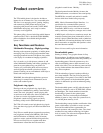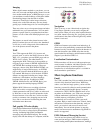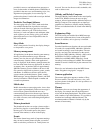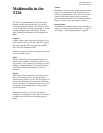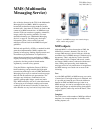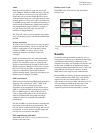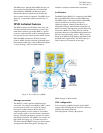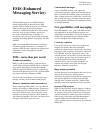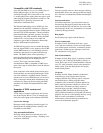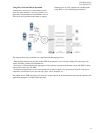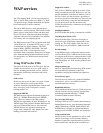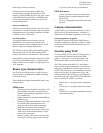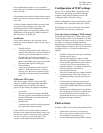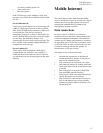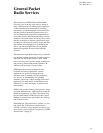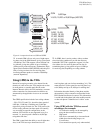T226 White Paper
July 2003 (Rev C)
12
Compatible with SMS standards
Users will find EMS as easy to use as SMS. Over 15
billion SMS messages, are sent every month
worldwide. Roughly 80% of this traffic is user-to-user,
i.e. mobile phone users sending short messages to each
other using the keypad of the phone to enter text. The
remaining 20% is shared by downloads and
notifications of different kinds.
The Enhanced Messaging Service (EMS) was first
submitted to the standards committees by Ericsson.
Ericsson presented the outline structure of EMS to the
relevant ETSI/ 3GPP committees. The major mobile
phone manufacturers and most operators are actively
contributing to the 3GPP standards. Hence the EMS
standards have evolved and are now stable and
complete as part of the 3rd Generation Partnership
Project (3GPP) technical specification.
An EMS message can be sent to a mobile phone that
does not support EMS, or only supports part of EMS.
All the EMS elements i.e. text formatting, pictures,
animations and sounds are located in the message
header. The EMS contents will be ignored by a
receiving phone that does not support the standard.
Only the text message will be displayed to the
receiver. This is true consumer-friendly
standardization. EMS is compatible to SMS across
most of the range of mobile phones from the oldest to
the newest.
Some companies in the mobile phone industry have
developed their own messaging technologies, which
only work with their own phone models. Network
operators are in favor of EMS because it is universal –
many of the major mobile phone manufacturers are
constructively improving and developing the EMS
standards even further for implementation in their
products.
Examples of EMS contents and
applications
A wide range of contents, applications and services
may be developed. Below is a list of examples and
areas where messaging can be enhanced with EMS.
User-to-user message
Messages usually originating from the keypad of a
mobile phone can include pictures, melodies, and
formatted text with EMS.
Voice and email notifications
Notifying mobile phone users that they have new
voice or fax mail messages waiting - including icons
or melodies with EMS.
Notification
The user typically receives a short message notifying
them that they have a new message in their messaging
box, with icons or formatted text further enhancing the
message.
Internet email alerts
An Internet email alert is provided in the form of a
short message that typically details the sender of the
email, the subject field, and the first few words of the
email message. In this case, formatted text is excellent
to identify message elements.
Ring signals
Downloading ring signals from the Internet.
News & commercials
Examples include: Illustrated world news, sports
scores and news headlines, finance and stock market
news with diagrams and tickers, commercial product
promotions, weather reports with maps, tunes from
TV commercials as ring signals.
Info & entertainment
Examples include: Ring signals, e-greetings, football
team logo, joke-of-the-day illustrated by pictures or
sound, horoscopes, movie related animation or theme
song, TV show promotions, music artist promotions,
lottery results, food and drink pictures and recipes,
mood-related pictures.
Corporate
Examples include: Flight schedules, preinstalled
corporate logos, map snippets and travel info,
company branded icons and ring signals, corporate
email notifications, affinity programs where
companies notify customers of product updates etc.,
banks notifying customers about new services and
interest rates, call centers providing answers to
questions about a product, vehicle positioning
combining EMS with Global Positioning System
(GPS) position information, job dispatch with delivery
addresses for sales or courier package delivery, using
EMS in a retail environment for credit card
authorization, remote monitoring of machines for
service and maintenance purposes.



